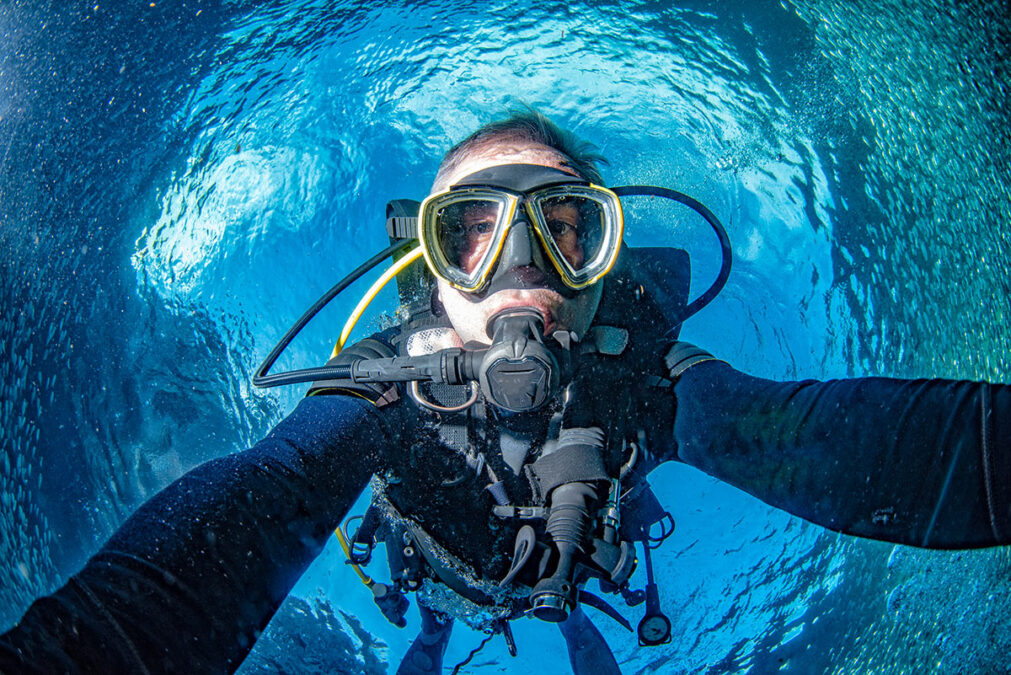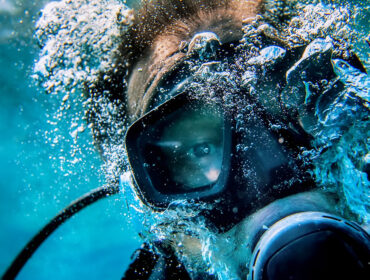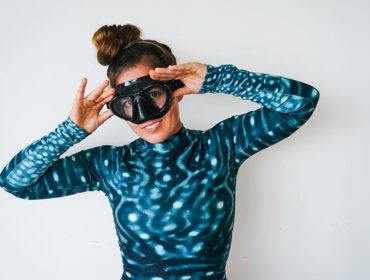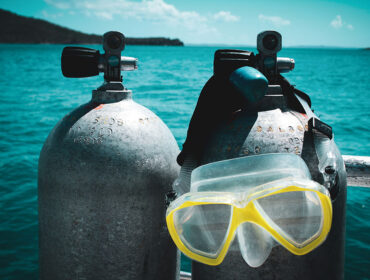The SCUBA mask: window to the underwater world. Without it, you wouldn’t have the air space in front of your eye required to see clearly below the water’s surface, making SCUBA diving a nearly pointless endeavor.
Before we dive into what to look for when buying a SCUBA mask, we first need to dispel two common misconceptions:
- Goggles are not the same as a mask. Goggles are what you wear when lap swimming. A mask is what you wear when snorkeling or SCUBA diving. The big difference? Your nose is enclosed in a mask because you must equalize the air surrounding your eyes.
- Buying a mask online is not a disaster in the making. The honest reality is there are quite a few masks that will fit the majority of divers. Due to pliable mask skirts, they mold to fit most faces. If your mask doesn’t fit, LeisurePro has excellent exchange policies to get you the right mask at the best price.
Standard SCUBA Mask Features
- Tempered Glass. All dive masks should have tempered glass to ensure durability under pressure and scratch resistance when banging around inside your gear bag.
- Hypo-allergenic Silicon Skirt. If you have latex allergies, fear not. Most modern masks use hypo-allergenic silicon for the part of the mask that touches your skin, so you should be okay.
Optional SCUBA Mask Features
- Skirt Color. Mask skirts typically come either in clear or black silicon, but you may find the occasional exception. Hunters and photographers/videographers tend to prefer black skirts due to their ability to block distracting peripheral light. Some divers who suffer from mild claustrophobia prefer clear because it feels more open. Clear skirts will tend to discolor to a yellowish color after prolonged use while black stays black.
- A number of Lens Panes. Masks can come with anywhere from one single lens up to six. If you might need corrective lenses, you’ll most likely want at least two panes so you can replace the standard glass with corrective lenses. Panes may be added to the bottom and sides of the mask to increase peripheral visibility. Typically, the more panes you have, the higher profile the mask becomes.
- Profile. You’ll hear divers talk about low—or high-profile masks. This refers to how far off your face the mask sits. As mentioned previously, the more panes, the higher the profile. This becomes a concern if you’re diving in high currents, as a high-profile mask is more likely to be knocked around. A lower-profile mask is also easier to clear and equalize because it has less air space inside.
- Purge. Masks can sometimes include a purge. A purge is designed to allow you to clear your mask of water more easily. To use a purge, make sure the purge device (typically at the tip of the nose, but sometimes along the side) is at the lowest point, and exhale through your nose. While rarely an issue, some divers do have concerns over an extra moving part on their mask that could create complications.
- Corrective Lenses. You may want a mask that offers corrective lenses if you wear glasses or contacts. Typically you’ll buy a standard mask with removable primary panes as well as the replacement lenses based on your prescription and simply swap out the lenses.
SCUBA Mask Accessories
- Anti-fog. Masks tend to fog up if not treated properly. Some people do just fine with spit, while others need something a bit more industrial-strength.
- Spare Straps. Mask straps can break after many uses, so it’s an affordable option to keep a spare with you.
- Strap Covers. Silicon straps can yank hair and can be difficult to properly place with thick gloves, so a solid neoprene strap cover (or replacement strap) is an excellent upgrade for most divers.
- Mask Case. Some masks come with protective cases, but if not (and you’re prone to being rough with your gear), protecting your underwater eyes is an affordable investment.
Guide to Preparing a SCUBA Mask
So you’ve received your shiny new mask, there are a couple of things you need to do first:
- Check the fit. If a mask doesn’t fit, it will leak, and you’ll be unhappy. Place the mask on your face with the strap of your head. Repeat this: The mask strap should not be on your head to secure the mask. Inhale lightly through your nose. Lean your head forward. The first test is passed if the mask stays on with no noticeable leaks. Now look in the mirror. Ensure your mask skirt’s inner ridge is securely against your face. If the mask passes these tests, you should be good to go.
- Clean the lens. Masks come with a film from the manufacturing process that will make your anti-fog efforts worthless. You’ll hear of some divers using a lighter, but since that takes a bit more skill, let’s use the easier method: toothpaste. Use a non-gel toothpaste and rub a dab around the panes. Let it sit for a moment, then rinse.
If you’ve followed our guide to buying a SCUBA mask, you should have no problem finding the right mask for your diving needs!




